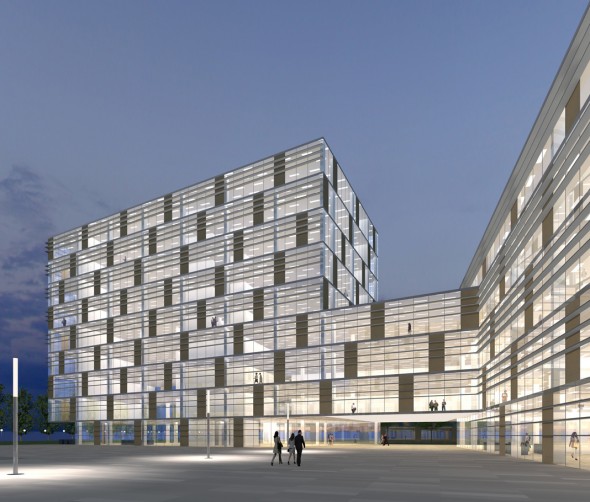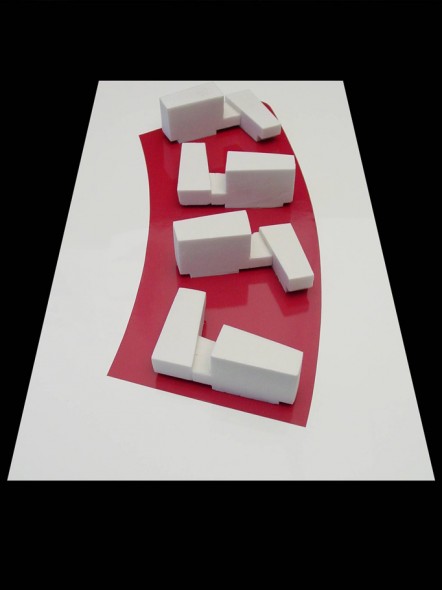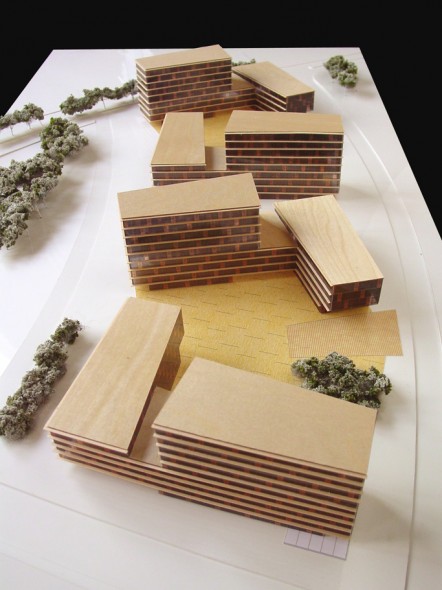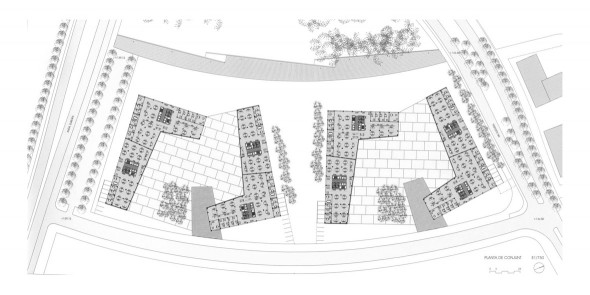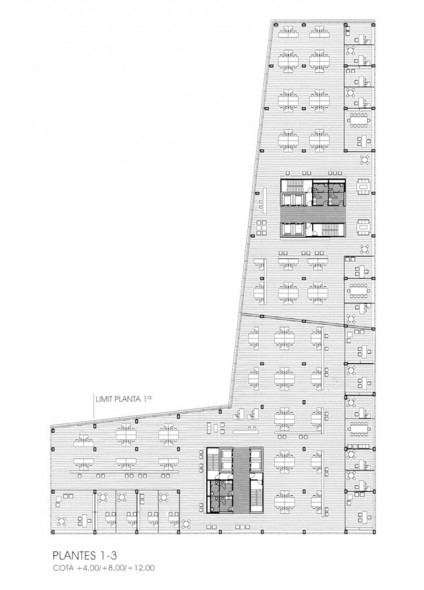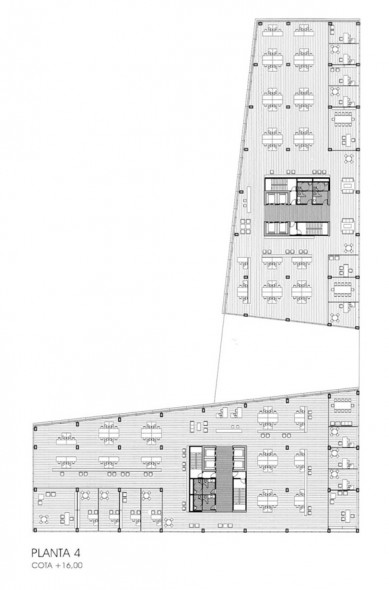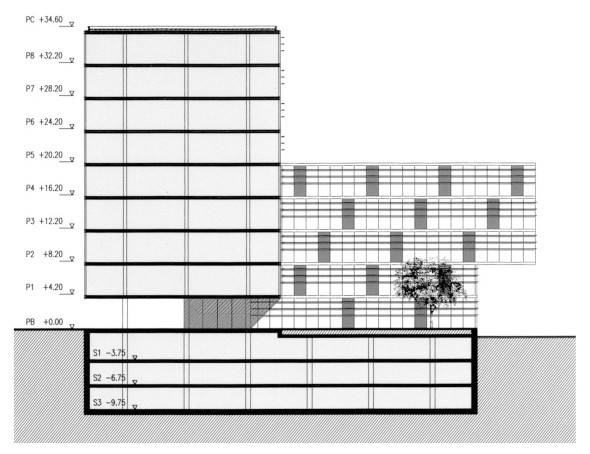Master plan in Sant Cugat del Vallès
| Dates | 2003 |
| Site | Sant Cugat del Vallès |
| Client | TASINSA |
| Built area | 56.166 m2 |
| Architects | Joan Pascual, Ramon Ausió, Cristóbal Fernández |
| Imaging | In-house |
The site has a curved rectangular shape which suggested the construction of a set of blocks that would sit freely on the land rather than follow any street alignments. Those buildings are designed with an L shape, set in pairs following a polar symmetry. The result is a series of semi-enclosed spaces between the buildings which connects them both visually and physically, acting as a meeting point as well as an access route to each building.
The buildings have a lower body five storeys high, and a main volume nine storeys high. The combination of those different heights placed in an apparently random position gives the scheme its special character.
By spinning the buildings around the centre of the courtyards, the transition forms the alignment of the Europa Avenue to the Via Agusta is done in a natural way, an otherwise very difficult task considering the curvature of the site.
All paved areas are enclosed in the courtyards created between the buildings, whereas the rest of the land is integrated to the surrounding green areas.
